14 January 2021 (Chania, Greece) – For some time now I’ll bet you feel like I do: history is itself the pandemic. In the U.S. and elsewhere, it has been in overdrive, teeming with evils, flush with collapses, abounding in fear and rage, a wounding contest between the sense of an ending and the sense of a beginning, between inertia and momentum, all with what Leon Wieseltier calls “the terribilities that occur in ages of transition”. We have become connoisseurs of convulsion. It’s not just that we are at sea. Our roiling sea is itself at sea!
I see it every day, I read about it every day – the unbalanced limited thinking much of our modern culture has accumulated and the short-term cul-de-sacs we have rushed into these last 40+ years. Even though retired, I still need to read and think and write a lot or I’ll dry up. I still keep to my “read-4-books-a-month-and-internalize-them” regimen. I still read my five monthly paperback culture, politics and technology magazines. I still cruise the Net.
But the problem with such vertiginous hours is they always come with both clarities and confusions – sometimes (many times) there is a failure in the promise of illumination. That was certainly the case this past week as I spent hours reading analysis of the U.S. Capitol siege, and chatting with many of my contacts in the intelligence, cyber and technology communities. Folks I’ll refer to in the remainder of this post collectively as “my IC” – intelligence community.
We talked about coups, Parler, digital platforms, the SolarWinds hack, the collapse of society, culture wars, and all kinds of other stuff. Trying to get some perspective, even if partial, on our contemporary tumult.
We decided, for better and for worse, axioms and assumptions are dying everywhere around us. The guidance we need in our circumstances will not be provided by the circumstances themselves: they are too many and too contradictory and too volatile; passion increasingly unconstrained and power increasingly unconstrained. Uncontrollable effects and unmanageable consequences. And on top of all that, the masks on our faces are emblems of an entire era of vulnerability.
And how can we be sure that society hasn’t actually collapsed, and we’re just going through the motions?
But maybe we’re just deluded optimists. The most important thing we tell ourselves is “keep our heads”. Disequilibrium in history? Well, that demands an equilibrium of the mind. And that steadiness in the midst of turbulence is not complicity with the existing order. It just means in these bloody binges of history you are forced to sort through the true and the false, the good and the bad. And the continuities and the discontinuities.
Yes, it’s a horror show. So much seems to be wrong and so much seems to be slipping away. All of this violence, all of these continuing horrors, all of these endless outrages and marches. For those of a certain age (well, like me, at 69) the decline of our politics in recent decades has increasingly become a politics of catharsis, in which crisis is met mainly by emotion. Not logic. Not thought. To me, populism is just mass emotionalism, and the emotions are always ugly ones. Apocalypse is not an analysis. It is the death of analysis.
In America … well, it’s been there before:
The transformation of urban America accelerated in the 1890s as port cities specializing in connecting the countryside with world markets gave way to the development of factories and financial centers throughout the nation. The second was the growth of a third-party movement known as Populism. Farmers and many urban workers united to form a class-based movement because they believed that their interests were not being met by the nation’s two political parties. Although the Populists would be a political force for only a brief moment, their ideas would greatly influence ideas about government and the nature of American politics. I believe Americans might prove again a need to return to Populism should theirs ever again be a deeply divided country like ours. Despite its many failures and false promises, Populism will remain an attractive, durable force.
Lester F. Ward (1905)
That’s an excerpt from The Annals of America, a 21-volume set my mother bought me over the course of two years in the 1960s. We had almost zero money when I was growing up but books were my Mom’s passion, her gift to her kids. We made twice-a-month trips to the public library for our monthly reading program, and my Mom gave us book gifts every birthday and Xmas. Besides The Annals, I still have about 20 books she gave me as a kid. She’d save a little bit every month. She had to buy The Annals series in installments. Much like Lapham’s Quarterly today, each volume of The Annals examined several themes using only primary source material.
Lester Ward was an American botanist, paleontologist, and sociologist. He served as the first president of the American Sociological Association. He promoted the introduction of sociology courses into American higher education. Ward emphasized universal and comprehensive public schooling to provide the public with the knowledge a democracy needs to successfully govern itself.
“We have reached a horrific point in time. We cannot unwind this.”
Those are the words of a very good friend, Aaron Taylor. We have spent a lot of time thinking about the last few years, comparing notes. His words lead off a few brief comments I have on where America seems to be. My thoughts as augmented by conversations over the weekend with my IC.
It was early evening here in Europe when the news hit. I was not watching TV. A media friend in Germany called and said “Turn on CNN”. I asked “Why?” He just said “Just turn it on”.
I am at the age where few things surprise me anymore but this did. Was the U.S. under attack? Was it an invasion? Were these rioters? Were they protesters? Was this a seminal moment in the American story, or yet just another odd Trumpian burp? You could hear the confusion in the voices of every broadcaster. Everybody seemed to have a hard time processing what was happening. It all looked like … well, a TV show.
I called a friend in D.C. :
ME: Do you have your TV on?! What in hell is going on?!
HIM: Not sure. I can’t seem to get any work done today. Trying to finish a memo.
ME: Trying to work during a coup. The most American thing ever.
There’s been plenty of debate over “was this a coup?” so let’s get some terms straight. Latin America has a history of autogolpes, or “self-coups.” This is the term for efforts by sitting executives to enhance or retain power by overturning electoral outcomes or by unconstitutionally gutting the power of other branches of government. Trump’s measures to overturn the elections since 3rd November constitute a “coup,” as they involve illegal usurpation of state power, even when it may not involve the use of force. Yet it is a “self-coup” because it is perpetrated by the head of government rather than military officers or others against that chief executive.
Further notes from Max Fisher who writes a column for the New York Times called “The Interpreter” wherein he explores, in-depth, the ideas and context behind major world events. In a long Twitter thread he noted:
My take on the “is it a coup” debate: Respectfully, coup studies are a little trapped in the field’s Cold War-era origins. Its definitions no longer fit the world we live in, which is why an event that fits any colloquial understanding of a coup might not technically qualify. Coup studies grew up at a time when the prevailing dynamic was civilian-military breakdowns, true for most of the Cold War. But the nature of authoritarianization has changed and today looks much more like … well, like the U.S. this week.
Civilian authoritarianization – elected strongmen who topple institutions from within, often by provoking decentralized violence like in D.C. – has been one of the most important global trends of the last 30 years. “Tanks in the streets” is outmoded, as are definitions that look for it. And so the U.S. public needs to adjust to the fact that it is becoming like the rest of the world.
Everyone paying attention already gets this. I’m just writing it down for my own sanity after the events of 6 January. As more comes out it feels like we know less because each new fact hints at a story much bigger than the one we have heard so far. The normal rhythms of what becomes public information do not apply. Witness the absence of briefings expect for that one, brief DOJ press conference on who was being arrested. Here are just a few snippets from what I’ve streamed:
• There’s the black officer who appeared to be running scared of the mob, but was instead cleverly leading them away from the just-closed Senate chamber.
• There’s Alexandria Ocasio-Cortez saying she didn’t want to shelter with some of the Republicans because they’re QAnon nuts who might have given away her location.
• There’s the congresswoman who found the panic buttons in her room all mysteriously gone.
• Users of the far-right social network Parler were among the horde of rioters that managed to penetrate deep inside the US Capitol building and into areas normally restricted to the public, using detailed maps, according to GPS metadata linked to videos posted to the platform the day of the insurrection in Washington.
• Three members of Congress contracted the coronavirus after sheltering in a crowded room as a pro-Trump mob stormed the Capitol, testing positive despite having been vaccinated against the virus. Quite a dramatic way to demonstrate that immunity takes some time to develop. If the mob doesn’t kill you, the idiots not using masks and social distancing will.
• Two Arizona Congressman schemed with January 6th organisers to put maximum pressure on Congress while they were voting. At the time the mob was making its move on Wednesday, Representative Alexander, a national “Stop the Steal” organizer, posted a video on Twitter of himself saying, “I don’t disavow this. I do not denounce this.” After the rampage, he quickly deleted it.
– An internal FBI memo has been leaked to The Washington Post. It issued an explicit internal warning that extremists were preparing to travel to Washington to commit violence and “war,” and do “massive harm”, contradicting a senior FBI’s official’s declaration over the weekend that the bureau had no intelligence indicating anyone at last week’s pro-Trump protest planned to do harm. It also revealed that individuals were sharing a map of the Capitol complex’s tunnels, and possible rally points for would-be conspirators to meet up.
The list goes on and on. And the revelations will get worse when the Congressional hearings on the assault begin in two weeks. If you take the time to read through the thread of initial affidavits being posted on Twitter and other sites about what the terrorists who besieged the Capitol intended to do, especially the weapons they carried, you’ll appreciate how close this came to being a mass casualty event. As one of my IC members said, it was almost a three-step process: (1) a herd of cows with the numbers to overwhelm the underwhelming “security” force present. The patsies, followed by (2) some number of motivated and equipped personnel that got on-site too late to take hostages and do the dirty deeds, and (3) intelligence gatherers who took hard drives, documents and laptops (quite a bit based on reports still coming in).
I do not think anybody believes the attack on the Capitol was instigated by “foreign enemy involvement”. But few in my IC thought the event would be ignored by Russians, the Chinese or whomever. And I come to this with some first hand knowledge. In the summer of 2018 I completed a course on Russian cyber warfare at the U.S. Army War College. One small bit/quote from that course: “The Russian intelligence community has monitored and infiltrated many strains of U.S. radicalized groups. SVR [Russia’s top intel entity] is all over these groups. Russia is a threat player and see these entities as merely another device to use in warfare. And their ability to manipulate and recruit U.S. civilians to engage in terroristic acts has been demonstrated manifold times.” One of my closest friends in the military is a (retired) Lieutenant Colonel in the Marines who was in military intel. After 9/11 we had a chat and he said: “Make no mistake. Russia is and will remain our greatest, #1 enemy”. From all we know about Russian actions over the last 10 years it would be inconceivable they would not participate in such a “gift” as an assault on the Capitol and potential access to Congressional records. They would not be doing their job if they did not. And that does not include the Beltway bandits whose only mantra is money. They’d find ready buyers for the contents of closed Congressional briefings, oversight and investigations. And as my IC has told me (not yet public information) several of the “protestors” accessed computers looking for specific things. Guided, perhaps?
I’ll leave the coup studies to the coupstorians so one final point in this section. One way or another, Donald Trump will soon be gone from the White House. And that, to quote Prince Hamlet, is “a consummation devoutly to be wished.” But the responsibility for Trump’s push to overturn an election …
must be shared by a very large number of Republican members of Congress. Rather than contradict Trump from the beginning, they allowed his electoral fiction to flourish. They had different reasons for doing so. One group of Republicans is concerned above all with gaming the system to maintain power, taking full advantage of constitutional obscurities, gerrymandering and dark money to win elections with a minority of motivated voters. They have no interest in the collapse of the peculiar form of representation that allows their minority party disproportionate control of government. The most important among them, Mitch McConnell, indulged Trump’s lie while making no comment on its consequences.
Of course this did make a kind of sense: If the election really had been stolen, as senators and congressmen were themselves suggesting, then how could Congress be allowed to move forward? For some Republicans, the invasion of the Capitol must have been a shock, or even a lesson. For the breakers, however, it may have been a taste of the future. Afterward, eight senators and more than 100 representatives voted for the lie that had forced them to flee their chambers.
Post-truth is pre-fascism, and Trump has been our post-truth president. When we give up on truth, we concede power to those with the wealth and charisma to create spectacle in its place. Without agreement about some basic facts, citizens cannot form the civil society that would allow them to defend themselves. If we lose the institutions that produce facts that are pertinent to us, then we tend to wallow in attractive abstractions and fictions. Truth defends itself particularly poorly when there is not very much of it around, and the era of Trump — like the era of Vladimir Putin in Russia — is one of the decline of local news. Social media is no substitute: It supercharges the mental habits by which we seek emotional stimulation and comfort, which means losing the distinction between what feels true and what actually is true.
These are the opening paragraphs of an essay by Timothy Snyder, the Levin professor of history at Yale University and the author of many histories including “On Tyranny,” America’s turn toward authoritarianism. It is the most compelling read on the political atrocities committed by Trump, the acts of his enablers and supporters, what the mob did, and what comes next for America. It is a very long read, with some excellent reader comments, and it is well worth your time. You can read the full essay by clicking here.
As Snyder notes, Trump’s coup attempt of 2020-21, like other failed coup attempts, is a warning for those who care about the rule of law and a lesson for those who do not. His pre-fascism revealed a possibility for American politics. For a coup to work in 2024, the breakers will require something that Trump never quite had: an angry minority, organized for nationwide violence, ready to add intimidation to an election. Four years of amplifying a big lie just might get them this. To claim that the other side stole an election is to promise to steal one yourself. It is also to claim that the other side deserves to be punished.
America will not survive the big lie just because a liar is separated from power. It will need a thoughtful repluralization of media and a commitment to facts as a public good. My view? That is impossible.
Watershed moments
In the realm of technology, social platforms, and media, this was a watershed moment of sorts. This was the moment, as many have written, where our digital and physical worlds completely collided, resulting in this historic, absurdist, deadly outcome. This is uncharted territory, but it’s not at all without prediction. As I have written in numerous posts, we have been barreling to that moment for a few years now. As have so many others blogs and newsletters, and so many other voices.
This is reality TV, but this is also warfare. There is no longer any distinction. Reality TV has won America. Everything had been Kardashianized. Power now comes from holding attention. Whether you’re creating a billion-dollar cosmetics line, starting a coding school, or becoming President, as long as the dominant distribution forms of information are driven by ad-based algorithms, the loudest, craziest, weirdest voices will win. Outlandish performance is central to any outcome.
The Capitol was invaded and it was certainly occupied. However, after a few hours, most people left peacefully. There was no plan to really hold the Capitol, yet, five people really died. What was the point of all this?
Easy. Think of all the images you see nowadays … not just the ones on 6th January … in any given conflagration: phones and DSLRs out, and an endless stream of photos and livestreams. The performative element is now part of the strategy. The idea of some salty, old general in fatigues, chewing on a cigar, looking over a rolled out map, pointing to a target saying “send our best influencers here” might feel preposterous, but war has certainly always had an informational and cultural element to it – last Wednesday was just the next evolution. There was a great Buzzfeed piece, The Pro-Trump Mob Was Doing It For The ’Gram, and one paragraph stuck out:
But if the stardom is the reward, what of their revolution? Don’t they have work to do, a vote to stop? For many in the mob that showed up in DC, the posing is the work. They have been so influenced by experiencing the world on social media that when they go out into physical space they seemingly think foremost of this, a revolution as a branding exercise — the photos of the QAnon Shaman, the photos of the vaping rioter, the photos of the man with his feet on Pelosi’s desk, the ricochet in the far-right internet as proof of victory. Yes, there is no power to be found in simply standing at the dais of the Senate. It is meaningless. It draws its power from the symbolism it conjures: Interrupt the vote to own the libs.
But I’d argue that there is power. This did tremendously further the movement. It’s very much worth remembering, for every QAnon Shaman, there were plenty of highly tactical, militarized people taking part that very much fulfilled our traditional notion of soldier or combatant.
The prevalent attitude of casting off this event as a bunch of idiots is wrong. I’ve seen some funny hashtags like #Nutzis and #CoupClutzKlan but this is serious. There was most likely not any centralized leadership but I can’t imagine a more perfect outcome for the Trumpist movement. They got on every front page. Everyone across the world was thinking and talking about them, the single most outcome currency in our age. The universal reaction still seemed to be that they did it for the lulz, but what that misses is, that hold of attention is now part of the battle. Watching news anchors fumble between calling them “rioters” and then “protestors” and then “insurrectionists” reminded me how we are all so disoriented, how in the world of online misinformation warfare, disorientation is always the first step. I’ll repeat Synder’s key paragraph from above:
Post-truth is pre-fascism, and Trump has been our post-truth president. When we give up on truth, we concede power to those with the wealth and charisma to create spectacle in its place. Without agreement about some basic facts, citizens cannot form the civil society that would allow them to defend themselves. If we lose the institutions that produce facts that are pertinent to us, then we tend to wallow in attractive abstractions and fictions.
Social media is not real life … until it is. The argument was that our real lives were increasingly becoming influenced, or even intertwined with our digital lives. The line was increasingly blurred. The more we turn to algorithmic feeds built by companies drowning in advertising profits to help us shape our understanding of reality, the more those feeds become our reality. The more the porn-like outliers become real. We get Trump … and rainbow bagels. And we get the year 2020. And now [groan] 2021. Remember when it suddenly felt like everything was getting crazier and things were moving faster? Guess what? Things really are moving faster and getting crazier.
But the more our digital and physical lives converge, the more disorienting things will continue to be. It’s long been socially acceptable to issue CAPS LOCK, rage-type profanities as a Facebook reply … but yelling at someone in the street is still not good.
Can we manage this collision of our online and offline lives and prevent future explosions? I do not thing so. Watch this clip:
I know what he saw. We all know what he saw. He saw #StopTheSteal, QAnon, Dominion voting machines controlled by Democrats, or whatever else. He saw endless scrolls affirming a stolen election and asking for someone to rise up. The most frustrating part of this is, Facebook may have banned Trump after-the-fact, but we’ve all known what everyone’s been seeing for years now. Even if Facebook never releases any analysis of that data, we know. Go ahead. You reason with that guy.
Which leads me to just a few general comments on Trump’s four-year information war. Last week’s riot at the Capitol was many things, but perhaps chiefly it was the culmination of four years of information warfare waged against the country from within the Oval Office. A sprawling disinformation campaign led by Trump – and buttressed by his allies in the media, online and in Congress – has severely destabilized the U.S. and makes further acts of violence and would-be insurrection a near certainty.
The big picture? Transnational conflict and power plays increasingly take place online, in the form of hacking, digital spying, influence operations and narrative warfare. (To understand narrative warfare I highly recommend you read Ajit Maan.)
Disinformation is a central tool in this arena, allowing nation-states and their online proxies to undermine the civic health of a rival power by spreading lies and preying on societal fissures. Many of the U.S.’ cyber defenders devote their lives to beat back these threats from abroad, but that work has been persistently dwarfed by the president’s own commitment to sowing destabilizing disinformation within the country.
The attack on the Capitol was a direct response to Trump’s refusal – what historian Timothy Snyder (see my link above) has called the “Big Lie” of the Trump presidency – to accept the free and fair election of Joe Biden. That refusal is just the end stage in a years-long, Trump-led construction of a reality built around an entirely parallel set of basic facts. A significant plurality of voters now lives in that reality. Undermining and delegitimizing his political opponents have been central to what is arguably – rivaled only by falsehoods about COVID-19 – the most damaging front of Trump’s information war:
• First was Trump’s “birther” conspiracy, which sought to delegitimize then-President Obama.
• Then there was the Trump campaign’s exploitation of emails of his political rivals, which were originally hacked and dumped online by Russian intelligence services, and the president’s subsequent refusal to acknowledge Russia’s culpability in this covert action campaign. This sowed doubt in U.S. institutions and also invited future foreign electoral interference – including online misinformation campaigns.
• Then there was the attempt by Trump and his close associates to coerce Ukraine into opening sham investigations into Joe Biden, whom Trump then correctly identified as his chief electoral rival.
The Capitol siege made it viscerally clear that the U.S. is now fully caught in a self-cannibalizing cycle of information warfare that pits rival domestic political camps against one other. As Zach Dorfman of the Aspen Institute has noted:
Since these are different appendages of the same body politic, this acutely threatens liberal democracy. It is a greater long-term threat to U.S. national security than the 9/11 attacks, and the greatest challenge for America since at least World War II, because it is a crisis over the very legitimacy of electoral democracy.
This weakening of shared reality between Americans – and dissolution of a sense of common national purpose – has been decades in the making, as historian Daniel Rodgers explores in his book “Age of Fracture” published in 2011. It was a book that predicted the disintegration of shared values in American social debate. Lisa Szefel got it right when she wrote in her review:
In “Age of Fracture”, Daniel Rodgers offers an elegant, often eloquent, history of intellectual life in the U.S. over the last quarter of the twentieth century. Primarily interested in the construction of ideas that shaped conceptions of history, society, and responsibility, he analyzes texts from an eclectic array of academic thinkers across the political spectrum. Rodgers argues that in the 1940s and 1950s, social scientists and political philosophers established the terms of the debate on a range of issues concerning the self and society, obligations and justice, morality and destiny. To these postwar intellectuals, ideas had severe consequences, contexts and nature constricted human action, and history loomed very large indeed.
While the turmoil and chaos of the 1960s caused tremors, it was not until the quakes of oil embargoes, unemployment, and inflation in the 1970s, that fault lines in this ideological consensus emerged that we would enter into a stage of intractable problems and deep polarisation.
Americans of different ideological persuasions increasingly live in separate communities, consume different – and antagonistic – news sources, and communicate on different social networks, with basic cultural signifiers even becoming intensely (and often demagogically) politicized. Yes, I know. The U.S. military’s Cyber Command sought to “defend forward” against potential malign actors carrying out disinformation operations from abroad. But you can’t “defend forward” when the call is coming from inside the house. The real and important work done during the last four years to combat online disinformation and on other important national security topics was overshadowed and undermined by the president himself.
Platform companies have finally come to grips with their roles as owners of battlefields. Banning Trump is obviously the headline event for social media, but it reflects a larger policy shift by the companies that created and run these now-essential networks. These firms are now making content moderation decisions based increasingly not just on whether a user or a post violated their rules, but what effect these might have on people off the network. This was already shifting as firms adjusted to reduce COVID-19 misinformation, but hit its culmination in Trump’s ejection.
Over the last year, and seen most explosively in the violent seizing of the Capitol, the political context changed, both on social media and in the real world. But Trump didn’t seem to understand it. Or, maybe, having never been held accountable from birth onwards, the outgoing president thought he could keep on operating the same way: crossing a line, and getting away with it. Importantly, Twitter decided he had crossed a final line. He had not just repeatedly broken the platform’s rules on election-fraud claims. Now, even after all the events at the Capitol, he had used his return to Twitter after an initial suspension to immediately break the pledge of a “peaceful transition” that he had made in a stilted video released just the night before.
Peter Singer and Emerson Brooking have addressed all these issues in their book Like War on the weaponization of social media (another book I highly recommend) and over the weekend Peter Singer noted this in his blog:
Whether Trump intended the dual dog whistle or not, it was heard that way by both the “patriots” whom he’d told he “loved” even as they rampaged and chanted “Hang Mike Pence, Hang Mike Pence,” and by the platform companies that own the networks he needed for his rabble-rousing messages. And for them, as it should be for the rest of us, Trump had lost the benefit of the doubt.
The reverberations of Trump’s deplatforming as part of this larger shift will shake out for not just the coming days, but over the long term — and in everything from terrorism to public health. The reason is that it fundamentally alters the playing field.
I have written about this many times before. Everything in the social media ecosystem was once tilted in the favor of toxic forces, from the algorithms that push our content feeds toward extremism to the companies’ longstanding reticence to admit it. Imagine a foosball game on a slanted table. Yes, the little soccer players could try to stop each rush of the rolling ball, but all their spinning wouldn’t matter in the end.
Over the past few years, however, that table has started to be righted. The paradigm is shifting. Driven by outside pressure over election disinformation, mass killings, and COVID-19 striking close to home – and perhaps most significantly, internal employee revolts – the companies’ leaders have put into place a series of measures that make it harder for toxic forces. From banning certain types of ads to de-ranking certain lies, these safeguards built up, piece by piece, culminating in the deplatforming of the Internet’s loudest voice. Again quoting Singer:
Of course, this shift is long overdue. Each new policy came after the fact. Those of us who work on this topic know that many horrible events fueled by social media could have been avoided or at least mitigated with such actions. For myself, the crystalizing moment was being told by a senior social-media executive after the mass killing in Pittsburgh that although his company had been able to limit ISIS’ use of their network, technical and legal reasons meant they couldn’t apply the very same measures to far-right extremists. But after several more social media-linked mass killings — Christchurch, El Paso, etc. — what he’d said was “impossible” suddenly became possible. As Internet wags have commented, the firms’ operating practices have been a bit like Calvinball from the Calvin and Hobbes comic, in which the rules are made up as they go.
Yet what often seems capricious and irresponsible is also understandable. The companies faced a rapidly changing business, technology, and battlefield. And making these kind of decisions is not what most people in tech firms planned on doing when they packed their bags for Silicon Valley. They want to build and profit, not police.
So where does this all leave us now? It certainly seems that the firms have finally come to the realization that they have a whole new set of responsibilities. They are not just tech creators or even the equivalent of news-media editors. After years of dodging it, they get that they are running information warzones. And there is a key change that comes from
understanding that social media is not just a communication space but a conflict space. In Clausewitzian terms, the forces of toxicity now face a whole new type of “friction”. (Peter Singer)
Of course, Trump’s ban from platforms that range from Twitter to Pinterest won’t end the spread of conspiracy theories. For example, the lie that the Capitol riot was the work of antifa was pushed to over a half million engagements within its first day by lesser superspreaders like Rep. Matt Gaetz. Nor will Trump’s exile from social media end the risk of extremism. Already, we see extremists clustering in smaller, tighter nets, some out in the open on networks like Gab and message services like Telegram, but many hidden from view. As with ISIS or Alex Jones, the faithful will follow. Decentralized platforms will flourish. But they’ll be smaller rabbit holes.
Yet, in this new conflict space, the most important actor just got moved off the board. The raw numbers show that Trump is not just a key node, but the literal center of multiple overlapping universes of conspiracy theory and extremism, from far-right extremism to QAnon to anti-vaxxers. Now, there is a literal black hole in each.
Yep. While nature may abhor a vacuum, these will not be easily filled. It isn’t that the man is unique. It is that the steps finally taken to rein in history’s greatest superspreader will made it harder for those who follow to have the same effect.
Oh, the horror: separating legal concepts from social issues
This needs a longer treatment and there are many doing just that such as Ben Thompson and Casey Newton. So just a few words from the cynic in me.
These platforms that have spent a decade fighting any effort to limit their users’ content, and have argued vociferously in favor of the First Amendment, not only killed off one of their most high-profile user’s account but took down an entire competing online platform within a day. Facebook and Twitter may have removed Trump’s posts following the storming of the Capitol and then suspended/shut down his accounts in the aftermath citing “the risk of further incitement of violence,” but it was not a coincidence that on the same day elections in Georgia handed the Democrats control of the Senate. That put the politicians who have been extremely critical of the social media giants in the past in the position of being able to hold them to account as the chairs of Congressional committees. With multiple antitrust actions against them, the next few years will be critical.
I know the intelligence community also put pressure on them based on what they knew was coming over the next weeks, but Big Tech surely “read the room” and made their move.
NOTE: this week leading Democrats in Congress promised to probe how digital platforms were used to inspire the attack on the Capitol. Many of the digital platforms – Facebook, Twitter, YouTube and Amazon – have announced they are reviewing their policies that enabled any violent groups to organize the insurrection and spread disinformation.
And so battle lines are coming into focus and those battle lines are going to be over what authority does the U.S. government (read: the U.S. Justice Department – the DOJ) have over the marketplace of ideas. The 1st Amendment. Freedom of speech. I would posit that the Founding Fathers, even 19th and early 20th Century Americans would find simply unfathomable today’s technological environment. Those Americans grew up in ages where speech was typically spread in books, self-published pamphlets, or old-fashioned in-person meet-ups.
Contrast that with Trump urging his supporters to descend on the Capitol. Members of his audience already had spent years firing one another up over social media, while creating, consuming, and recirculating reams of extremist propaganda. Even as they stormed the Capitol, some of them continued to extol the cause in real time, posting photos of themselves pillaging America’s national legislature. Granted. Violent mobs have been a feature of political life since the dawn of humanity. But the digital tools that allow every one of us to act as our own newspaper editor, radio host, and TV reality show would have been unimaginable. It isn’t just the technology itself that has drastically altered the debate about the limits of inflammatory speech, but also the consequent shift in decision-making power from public to private hands.
As noted by U.S. constitutional scholars Daniel Farber, Noah Feldman, Michael Gerhardt, Lawrence Tribe and Jonathan Turley (oh, and many more but those are the ones I stream) across Twitter and multiple articles, antitrust law, at times, dictates who, when, and about what people can and cannot speak. It would seem then that the First Amendment might have something to say about those constraints. And it does, though perhaps less directly and to a lesser degree than one might expect. All off these scholars have focused, at some point in their massive oeuvre, on what Daniel Farber calls “antitrust thinking in terms of speech control”.
I cannot review all that I have read but suffice it to say that the antitrust-First Amendment legal landscape focuses on the role of speech control. It reveals that while First Amendment issues are explicitly addressed relatively infrequently within antitrust decisions that is, in part, because certain speech (for example, speech that promotes economic efficiency) receives indirect protection as a byproduct of antitrust law.
But one major concept evolving from all these scholars (especially Farber and Tribe) is that central to society’s improved treatment of such speech within antitrust settings there must be a willingness to recognize the pitfalls of the status quo, to undertake change. Perhaps the reality that such interface issues are only likely to worsen given the ever-growing and evolving information economy will get society talking, government moving.
And, oh America’s power structures and partnerships that will join in the mix: Big Tech/Silicon Valley, billion dollar multinational corporations, billion dollar Hollywood, billion dollar corporate Media, and corrupt crony politicians and nameless D.C. bureaucrats in the CIA/FBI etc. One can see the DOJ caught in the partisan bickering over fake news and censorship and left-versus-right that consumes most congressional hearings on Silicon Valley. The global oligarchic line will have a field day in the years to come as the battles commence.
According to an anecdote in Harold Rosenberg’s brilliant book The Tradition of the New, when the Redcoats first encountered the Colonial revolutionaries way back in 1777, they were quite unexpectedly beaten. And they were beaten because they were the best-trained infantry in Europe. They had been so well trained that when they looked at the rough American terrain on which their opponents had chosen to meet them, they could not see it. Instead, what they saw was a European battlefield on which they expected to march in formation to meet and overwhelm a similar formation of the enemy, rather than uncouth renegades shooting from behind trees. A gridiron of style, a trained mode of perception, preceded them into battle, creating the illusion that in front of them was only what they intended to find:
The British army was the best. Britain was the most powerful entity in Europe. But that hegemony bred insularity, as the British forgot or had no knowledge of the rest of the world, or what was afoot. In a way, it was an imagined country, with pre-existent notions both about the continent, the world, and themselves.
America today is the same as those Brits. America created the notion that its technology, its perceptions, its control of world culture, forcing every country to use and assimilate the English-language, English-concept internet experience with so many dominant tech companies headquartered in Silicon Valley, would set the rules of information discourse. The West once sent missionaries to bring Christianity to Africa; in 2013, Mark Zuckerberg promised to “bring the world closer together” by providing internet access to millions in the developing world. (That particular project failed, but there are now more Facebook users in India than anywhere else.)
But America’s enemies, especially Russia, had other ideas. The Russian attack on U.S. elections – on its populace – exposed a lot of seams. And when I say “attack” I mean an attack on those seams, those grey areas. Yes, I know. All of America’s social and political faults and fractures are its own. Decades in the making. All that was revealed was how its adversaries could so easily exploit them.
This week I spent a few hours going through a lot of the Congressional investigation reports on the ads Russia bought for the 2016 election, and continued to buy in 2017 and 2018, as reported by Facebook and Twitter. The majority of Russian-bought ads identified by Facebook and Twitter were issue ads, focusing not on candidates but on divisive topics like race, refugees, immigration, gun control, freedom of speech. These ads were hard to define, unregulated. There was no clear industry definition for issue-based ads (it is still murky) but there lied the damage. Molly McKew on Medium nails it:
It is critical to understand the way the Kremlin saw America, the seams they choose to exploit and attack. They focus on points where America is weakest, working to create tools that can shape the environment and, in some cases, specific outcomes. They identify (and sometimes create) and support local resources that can be used to manipulate groups and discourse, compromise our systems, inject narrative into key information streams, enhance and manipulate divisions and conflict, find ways to deepen fractures. There are many goals, but in the U.S. a central one is always to alter how Americans see themselves, see their nation, and how Americans make decisions.
The best article I can recommend to you which will tie this all together was published by Politico magazine in January 2017. It has been my guide to all that has happened since. You can access it here.
I will explore this in much more depth when I begin my series on the SolarWinds hack because that hack actually brings all of this together. You need to look beyond “this was a cyber security issue”. It’s much, much more. In brief, the Kremlin has expanded its espionage, intelligence operations, influence operations, covert operations, diplomatic and political influence, active measures, and military campaigns beyond the boundaries of where these things used to occur. They have taken and continue to take territory — physical, virtual, spiritual. The mindset of shadow and hybrid warfare has continuity from the Soviet past. Their center of gravity has not shifted even as Russia’s internal fragility persists. This duality is hard to understand: that Russia can be inherently weak and yet systemically resilient all at once. I will attempt to explain that in my series.
And back to Molly:
America still does not see that the battlefield its adversaries sculpt in these grey domains (and not sculpted by Russians alone but by Americans against other Americans) – an “us versus us” instead of “us versus them“. With strategic injections of cash, information, narratives, and intelligence, government decision-making is compromised, institutions America counts on for clarity are corrupted, individuals captured or silenced, and everybody moves toward playing parts that subvert their interests – often with alarmingly little understanding of how its behavior has been altered.
The irregular presidency of Donald Trump exposed more. So did dealing with the COVID pandemic – or failing to deal with it, really, instead of being just flat out the worst. Holistically, it is a breakdown of resilience, exposing institutional fragility and a total lack of mobilization capacity. There was no framework that oriented American skills, volunteerism, or ingenuity toward solving any of the problems we suddenly faced and simply seemed unable to overcome. It was pathetic to witness and live through, even from afar. Though no longer a U.S. citizen I am still an “American” in that I am irrevocably tangled in America’s hopes, arrogance, and despair. That helplessness only served to amplify the backlash over each of these events and move Americans toward this point where everything is madness.
Currently, America simply lacks the mindset, vision, organization, or mobilization capacity to overcome these deficits – and it has certainly lacked the leadership and political will to reorient in the right direction. The unconscionable squandering of strength, power, and assets in a critical time of global transformation is mind-boggling.
This is not sudden. It has been building for 40+ years. And as for the perpetrators of terrorism in America … the mantra being “No one could have seen this coming” … John Holbein will tell you “we did not look” as he laid out the evidence showing that right-wing terrorist attacks have surged since 1994.
And once more to Molly for the win:
Americans have essentially mounted a never-ending, live-action wargame on themselves, and every one of its adversaries and allies have had a front row seat to see how it unfolded – to see the failures in mobilization, failures in intelligence, failures in decision-making and command and control, failures in security, and failures in leadership that this unintentionally-efficient red-teaming exercise has exposed.
We must assume that each of its adversaries now has far greater clarity on how vulnerable it is – on how small attacks or disruptions can cripple vital systems and critical infrastructure; send government decision-making into a closed-loop death spiral of process or polarization; distract Americans from greater threats; or inject narrative into its information domain that can spark conflict, radicalize targets, or propagate conspiracies that are the most efficient vehicle for subversion we have ever seen. They would even know how easy it is to overcome the defenses of its Capitol, and understand who and what to compromise and mobilize to replicate its breach.
America needs to brace itself. It is unfortunate but at home and abroad America will continue to be challenged along the seams – in these grey spaces, where attribution can be murky, authority for action unclear, right-sized capabilities hard to determine.
I’ll leave it to you to determine whether America (in fact all Western society) has actually collapsed, and we’re just going through the motions. Or whether we’ll all step back from the brink.
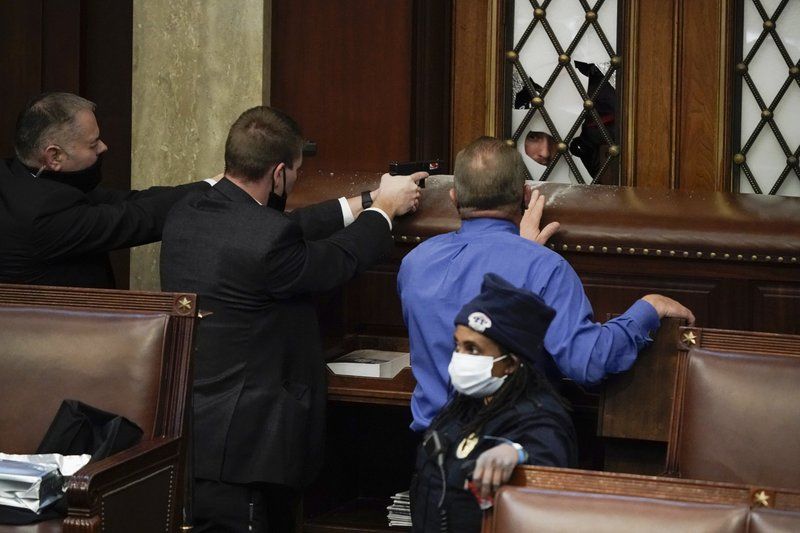
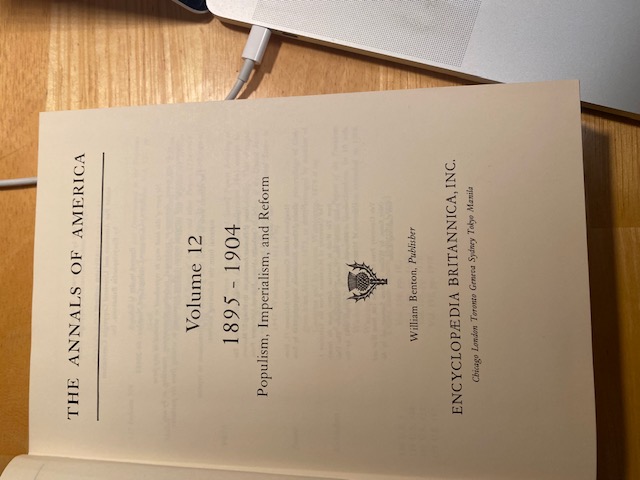
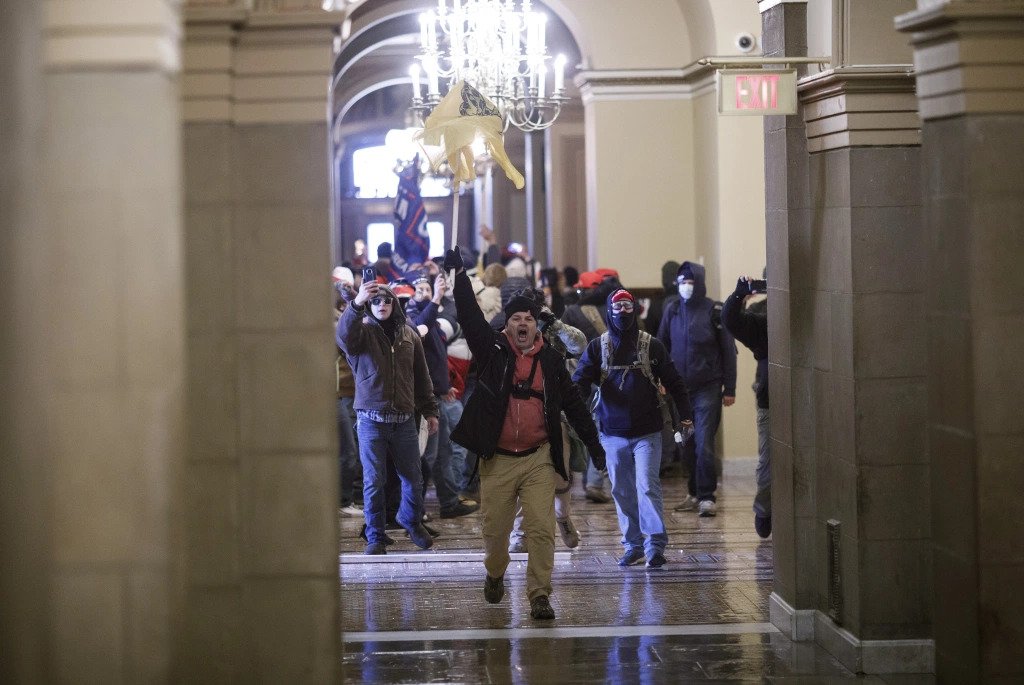
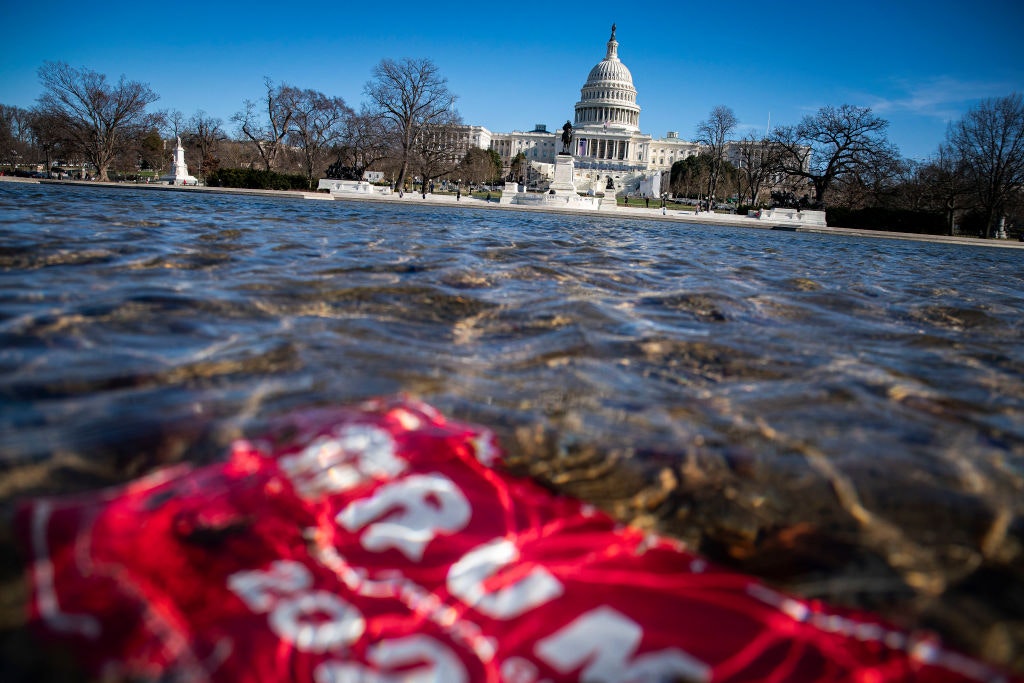

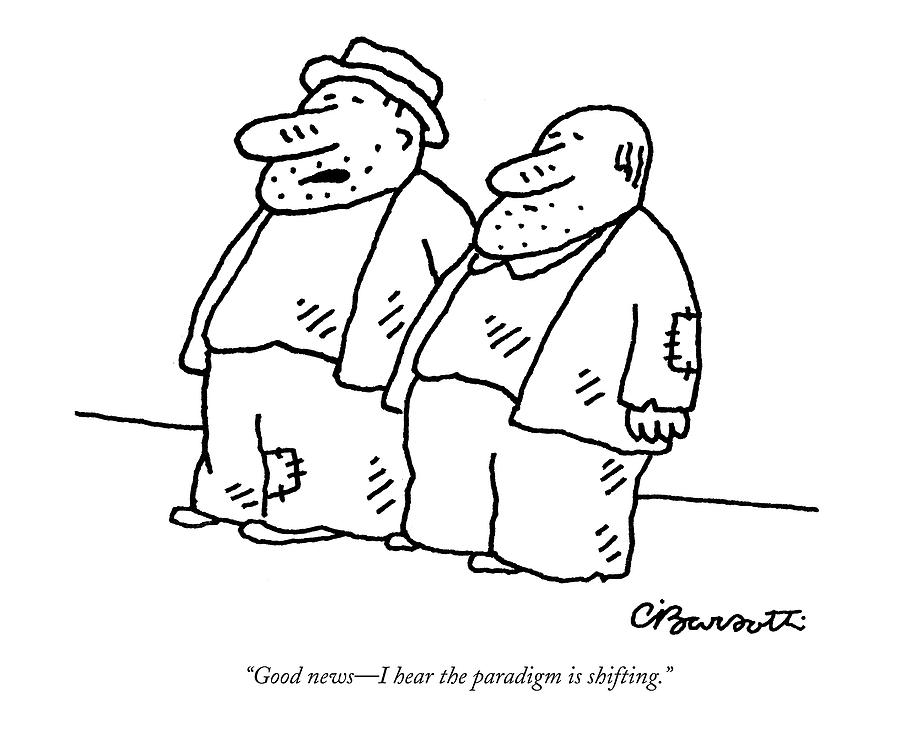
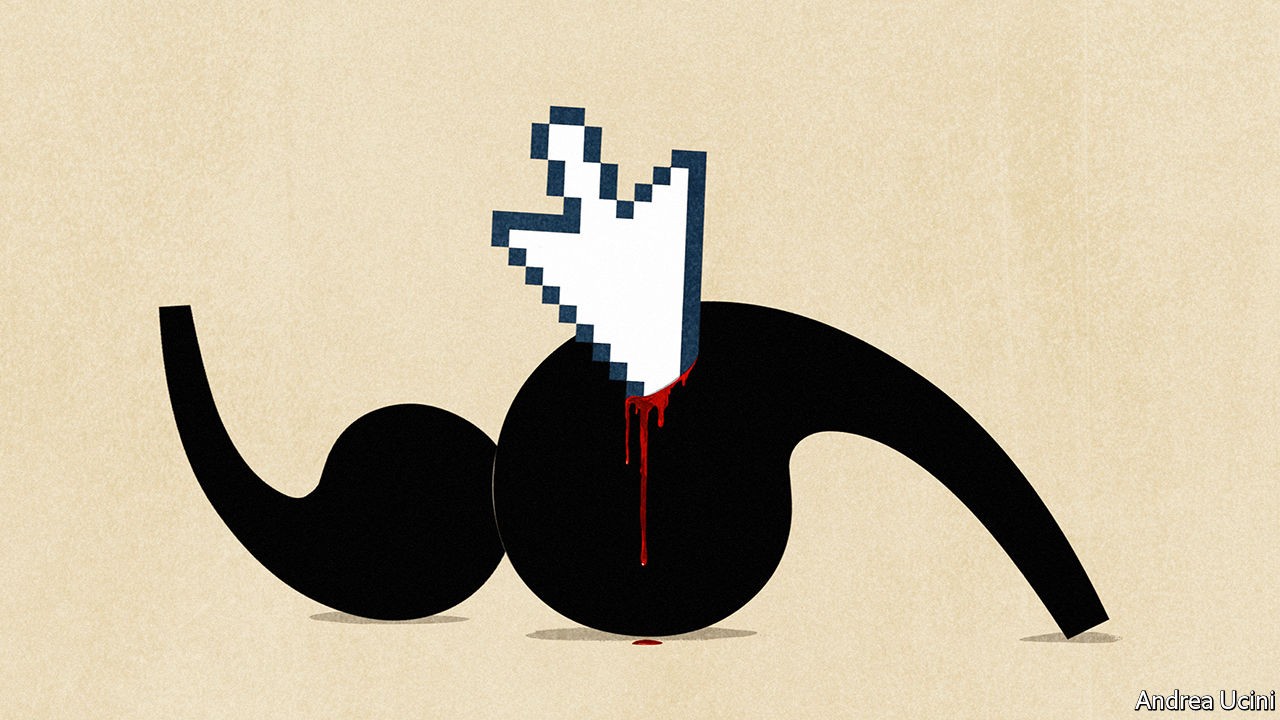


They refer to cops as the “thin blue line” in America, that image is very apt as it embodies well the relationship between order and chaos in the public realm. I *used* to think there was a stronger but perhaps invisible barrier in our political realm to the kind of behavior we’ve seen recently from the current administration and its enablers, but I’m inclined to think otherwise now, and I’ve lived through a lot, including the Vietnam war protests, Nixon, Carter, Reagan, etc. “Scandals” like Watergate, Contragate, etc. would barely move the needle today I’m sure given where the bar is being set. I’m not convinced someone more clever, prepared and manipulative won’t come along now and follow the blazen path to create more havoc and real damage.
Terrific stuff and makes great sense. I appreciate the refence back to the 18th century English military as I continue to contemplate where the UK is now in the world.